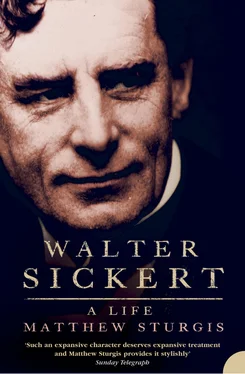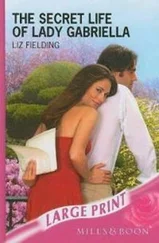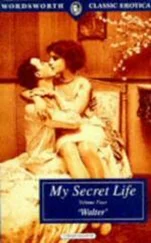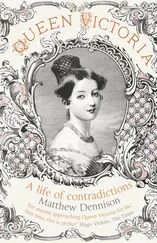Matthew Sturgis
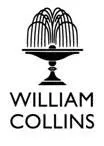
For Rebecca
Cover
Title Page WALTER SICKERT A Life Matthew Sturgis
Dedication For Rebecca
1 A Well-Bred Artist CHAPTER ONE A Well-Bred Artist
I The Münchener Kind’l’
II A New Home
III L’enfant Terrible
2 Apprentice or Student?
I The Utility Player
II Whistler’s Studio
III Relative Values
3 Impressions and Opinions
I The Butterfly Propaganda
II A New English Artist
III The London Impressionists
IV Unfashionable Portraiture
V In Black and White
4 The End of the Act
I Gathering Clouds
II Bridge of Sighs
III The Gentle Art of Making Enemies
IV Amantium Irae
5 Jack Abroad
I A Watering Place Out of Season
II Changing Effects
III Gaîté Montparnasse
IV Dal Vero
6 Londra Benedetta
I The Lady in Red
II Ambrosial Nights
III Mr Sickert at Home
IV The Artist as Teacher
7 Contre Jour
I Les Affaires de Camden Town
II An Imperfect Modern
III Red, White, and Blue
IV Suspense
8 The New Age
I The Conduct of a Talent
II Private View
III How Old Do I Look?
9 Lazarus Raised
I Over the Footlights
II Home Life
III Bathampton
IV Cheerio
Postscript Walter Sickert: Case Closed
Bibliography
Index
Acknowledgements and Preface
Notes
Praise
By the Same Author
Copyright
About the Publisher
CHAPTER ONE A Well-Bred Artist
He is a dear little fellow.
(Eleanor Sickert to Oswald Adalbert Sickert)
Walter Richard Sickert was born on 31 May 1860 in a first-floor flat at 59 Augustenstrasse, Munich, in what was then the independent kingdom of Bavaria. 1 He was the first-born child of Oswald Adalbert Sickert and his wife Eleanor. Oswald Sickert was a Dane, from the town of Altona in the Duchy of Holstein. He was a trained artist, with ambitions as a painter, but he was constrained to work as a hack draughtsman-on-wood for a Bavarian illustrated comic-paper called the Fliegende Blätter . Eleanor – or Nelly as she was known by her affectionate husband and her friends and relatives – was English by birth. The couple spoke mainly English at home. 2 Their new son was christened by the English chaplain at Munich: he was given the names Walter Richard. 3 Walter was chosen as being a name that looked – even if it did not sound – the same in both English and German. 4 Richard was the name of the boy’s maternal grandfather, the late Revd Richard Sheepshanks, a figure whose presence loomed over the young family, half beneficent, half reproachful.
Richard Sheepshanks had not been a conventional clergyman. He had scarcely been a clergyman at all. He never held any cure. His interest in the celestial sphere, though keen, had been scientific. He made his reputation as an astronomer and mathematician. The Sheepshanks came of prosperous Yorkshire stock. The family in the generation before had made a fortune in cloth, supplying – so it was said – material for military greatcoats to the British army during the Napoleonic Wars. The money from the Leeds factories amassed in this profitable trade allowed Richard and his five siblings to indulge their interests and enthusiasms. One brother, Thomas, chose Brighton and dissipation. 5 Another, John, dedicated himself to art: he moved to London and built up a large and important collection of English paintings, which he exhibited to the public at his house in Rutland Gate and bequeathed to the nation in 1857, six years before his death. * 6
Richard turned to the sciences. A brilliant university career at Trinity College, Cambridge, was crowned with a mathematics fellowship in 1817. He briefly contemplated the prospect of both the law and the Church and secured the necessary qualifications for both. (Having taken holy orders, he always styled himself ‘the Reverend’.) On receiving his inheritance, however, he was able to direct all his considerable energies to scientific research. He became a member of the Geological and Astronomical Societies, and was for several years the editor of the latter’s Monthly Notes . He was made a Fellow of the Royal Society, and of the University of London. His interests were many, ranging from demographics to the study of weights and measures. He had a particular passion for fine scientific instruments and devoted most of his income to buying them. He also busied himself in the intellectual and political disputes of the scientific world. 7
In scientific circles Richard Sheepshanks was greatly respected – much loved by his friends and not a little feared by his enemies. He was, in the restrained words of his close colleague, the astronomer Augustus de Morgan, a man of ‘very decided opinions’. And he was not shy of expressing them. His first professional training had been as a lawyer, and throughout his academic career he had a relish for controversies. He was, as he himself put it, well suited to such business, having ‘leisure, courage and contempt for opinion when he knew he was right’. He was well armed with a ready, if somewhat sarcastic, wit and a piquant turn of phrase. But in matters of what he considered to be of real importance he would – according to one obituarist – drop these weapons in favour of a more ‘earnest deportment’ and a more ‘temperate’ utterance. Despite being of ‘hardly middle stature’, having red-tinged hair and the inevitable side-whiskers of mid-Victorian fashion, he was, from the evidence of his portraits, a handsome man. He was also excellent company – clever, witty, well read in both the classics and in modern literature, and widely travelled in Europe. 8 He was knowledgeable too about art; and, tipped off by his brother John, commissioned Thomas Lawrence to paint a portrait of his beloved elder sister, Anne. 9
Anne Sheepshanks was as remarkable as her brother. A woman of enormous practical capability, intelligence, and sound sense, she encouraged and supported Richard in all his endeavours. She allied her resources to his, sharing his interests, his cares, and his house. The home they established together at 30 Woburn Place, Bloomsbury – not far from the British Museum – became a lively gathering place for many of the intellectual luminaries of scientific London. They even built their own small observatory in the garden, from which, in an age before saturated street-lighting, they were able to mark the passage of the stars. 10
The Reverend Richard Sheepshanks – like his sister – never married. His fellowship at Cambridge was dependent upon his remaining a bachelor, and he seems to have been in no hurry to give up his position, his salary, or his independence. Nevertheless, he did not allow professional considerations to stand altogether between him and the opposite sex.
It is not known exactly how or when he encountered Eleanor Henry. Indeed, very little is known about Eleanor Henry at all, except that she was Irish, fair-haired and handsome, and was a dancer on the London stage. 11 Perhaps Mr Sheepshanks picked her out of a chorus line. Or perhaps he met her in the street. At the beginning of the 1830s she was living in Henrietta Street, a little cul-de-sac behind Brunswick Square, near to the Sheepshanks’ London home.
Читать дальше
